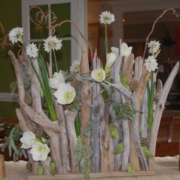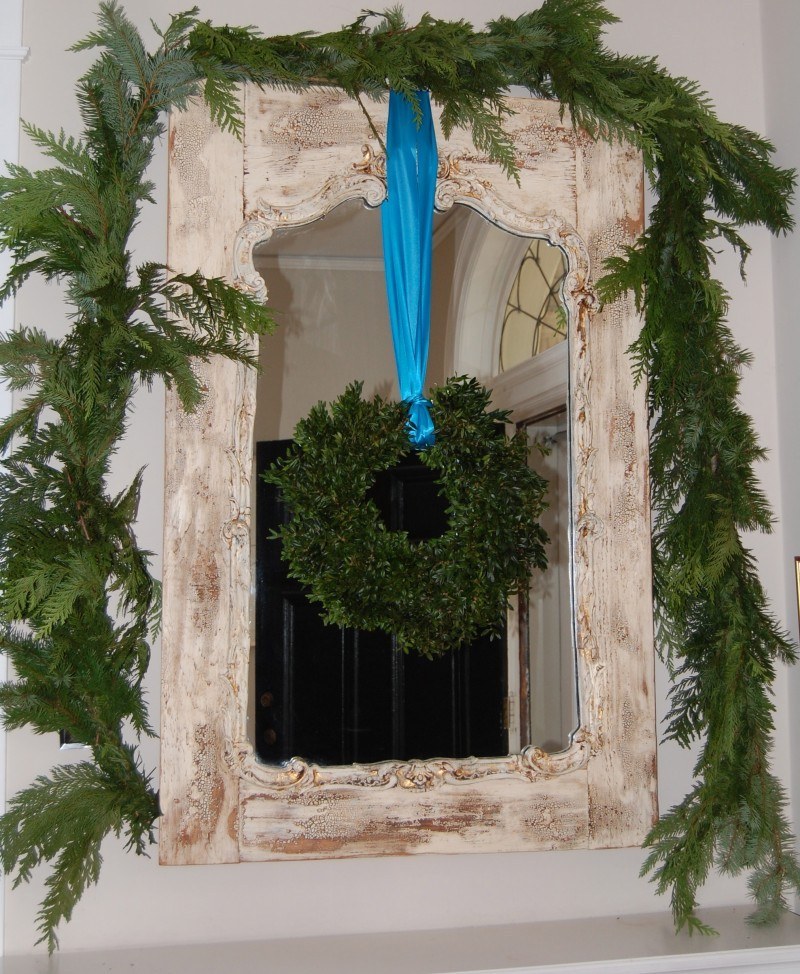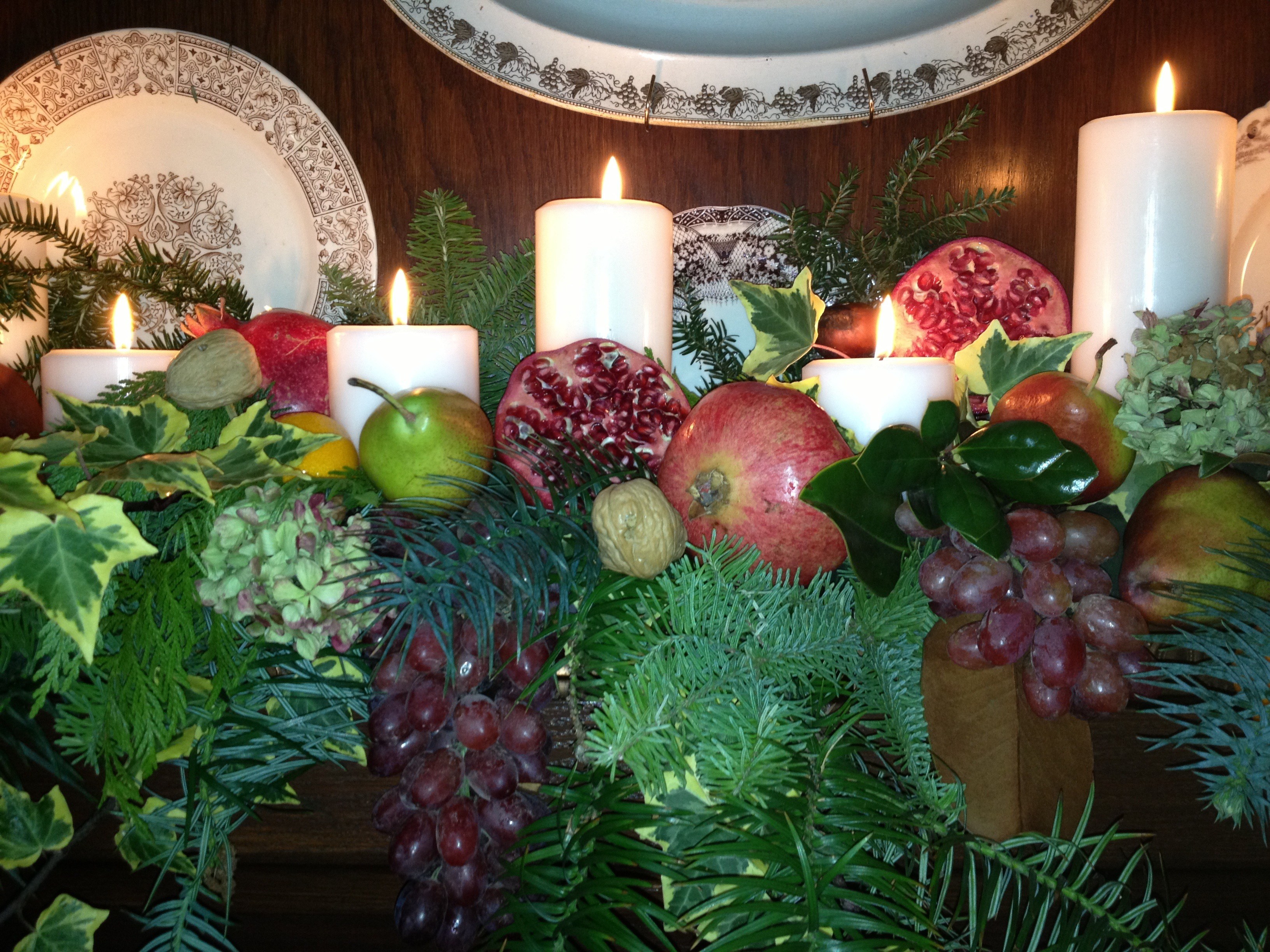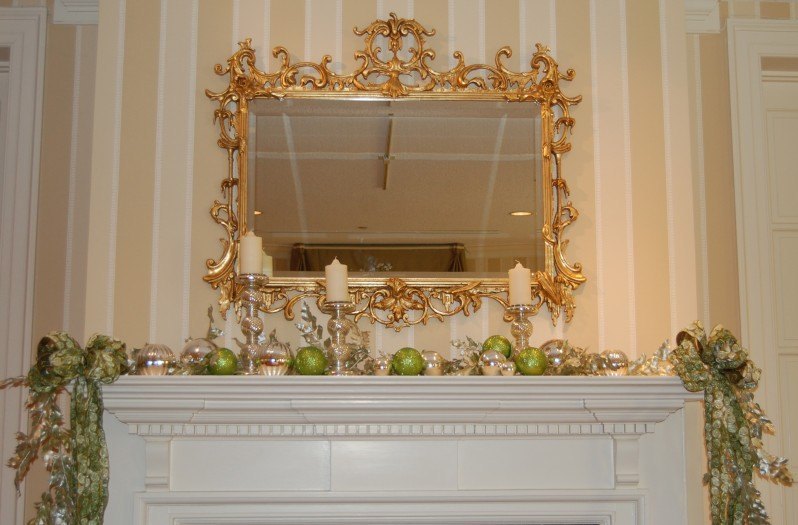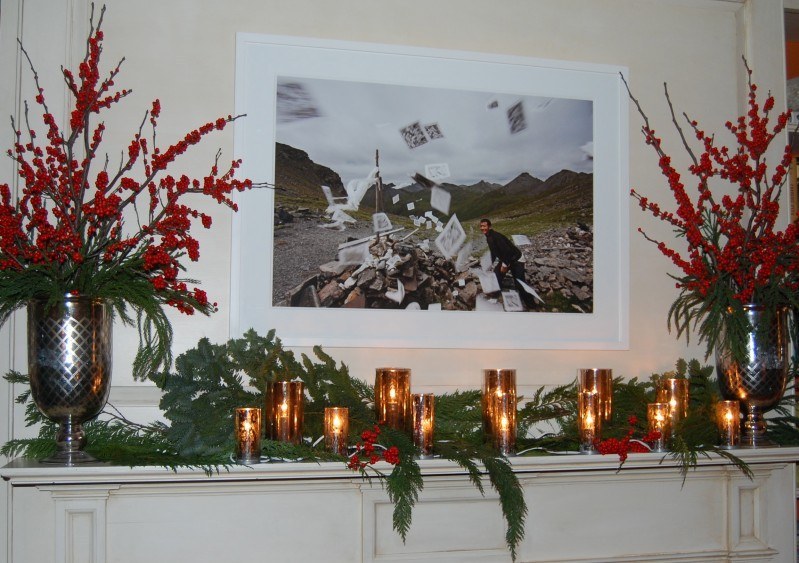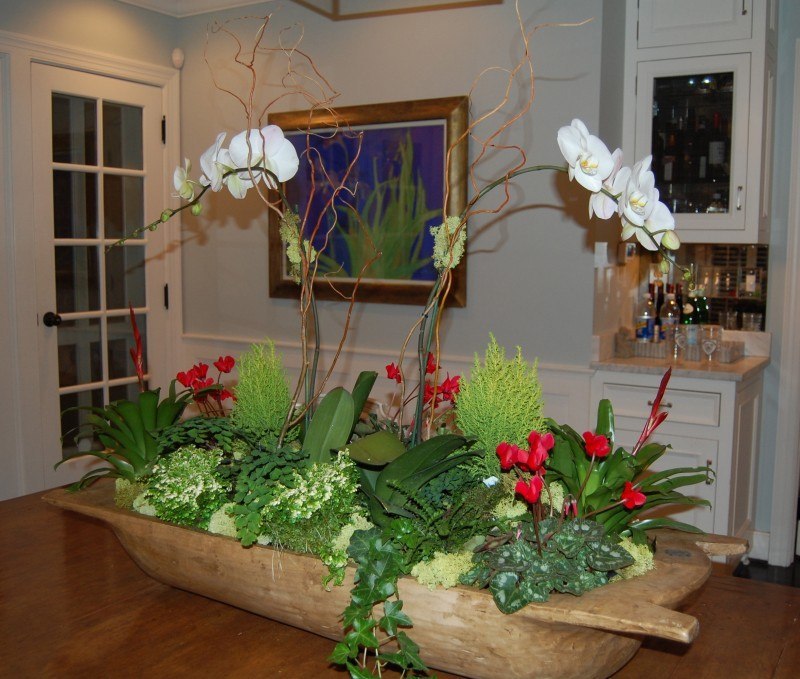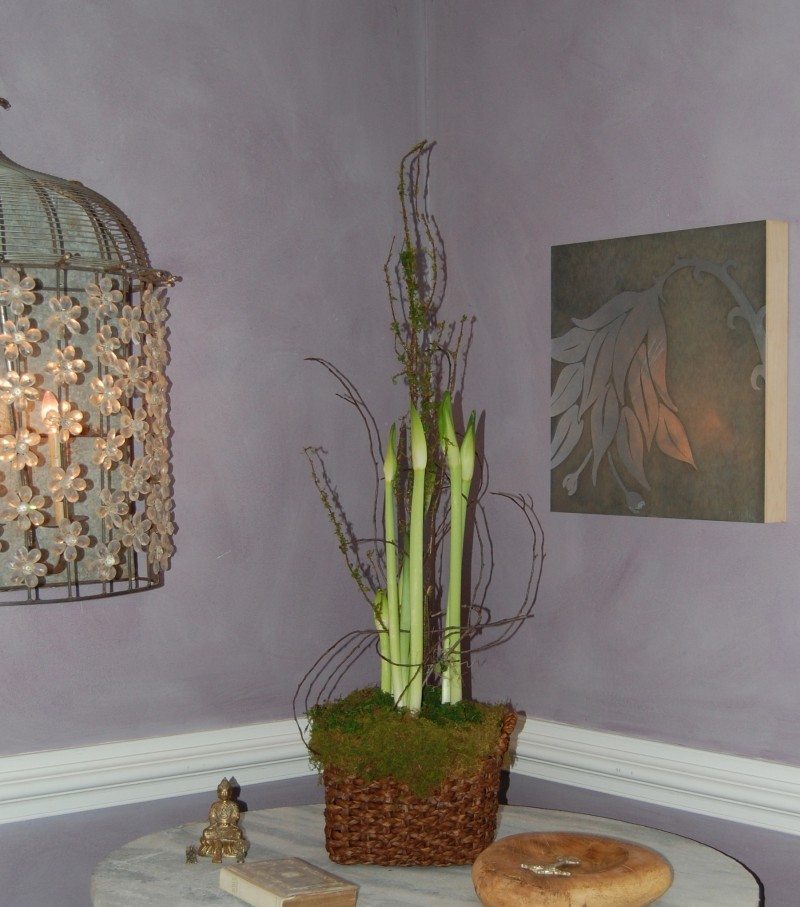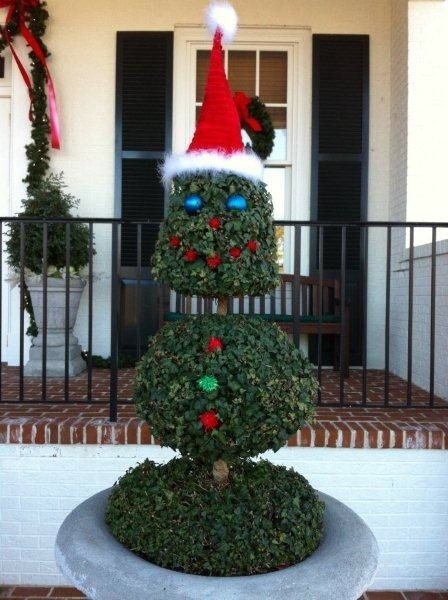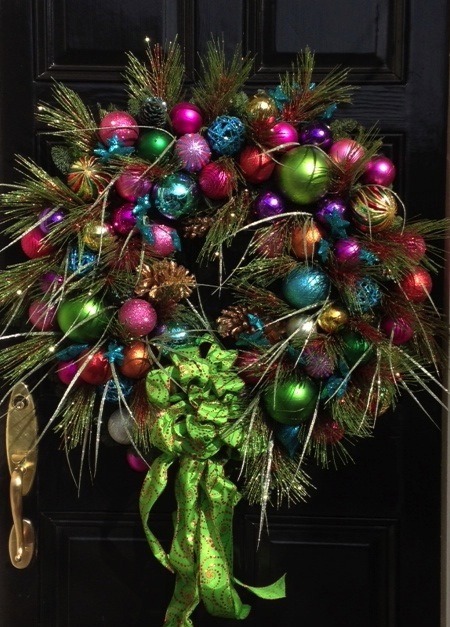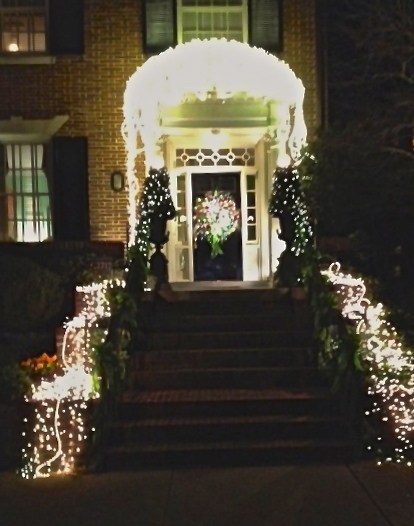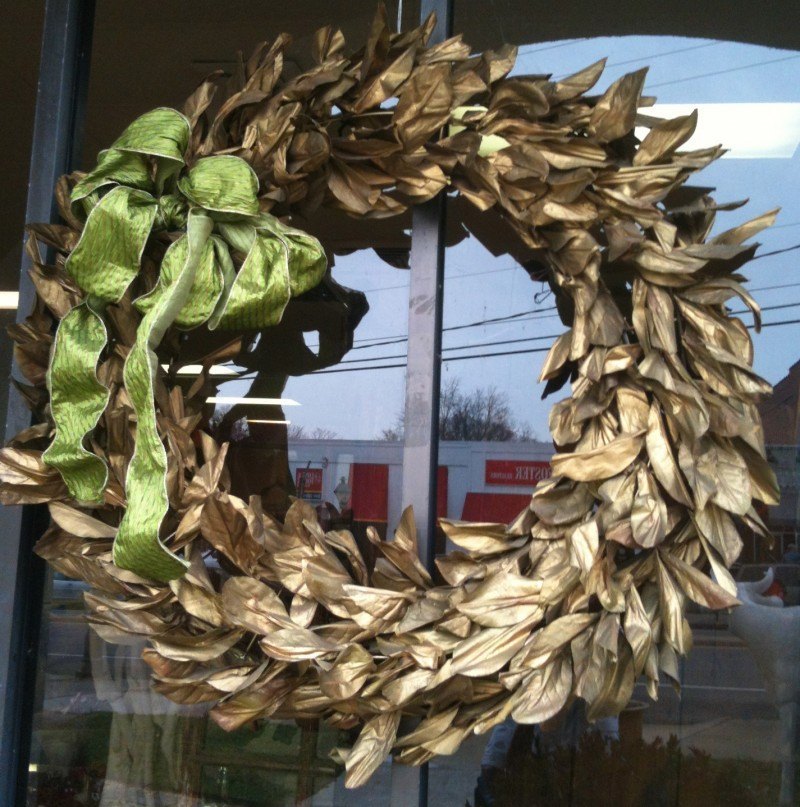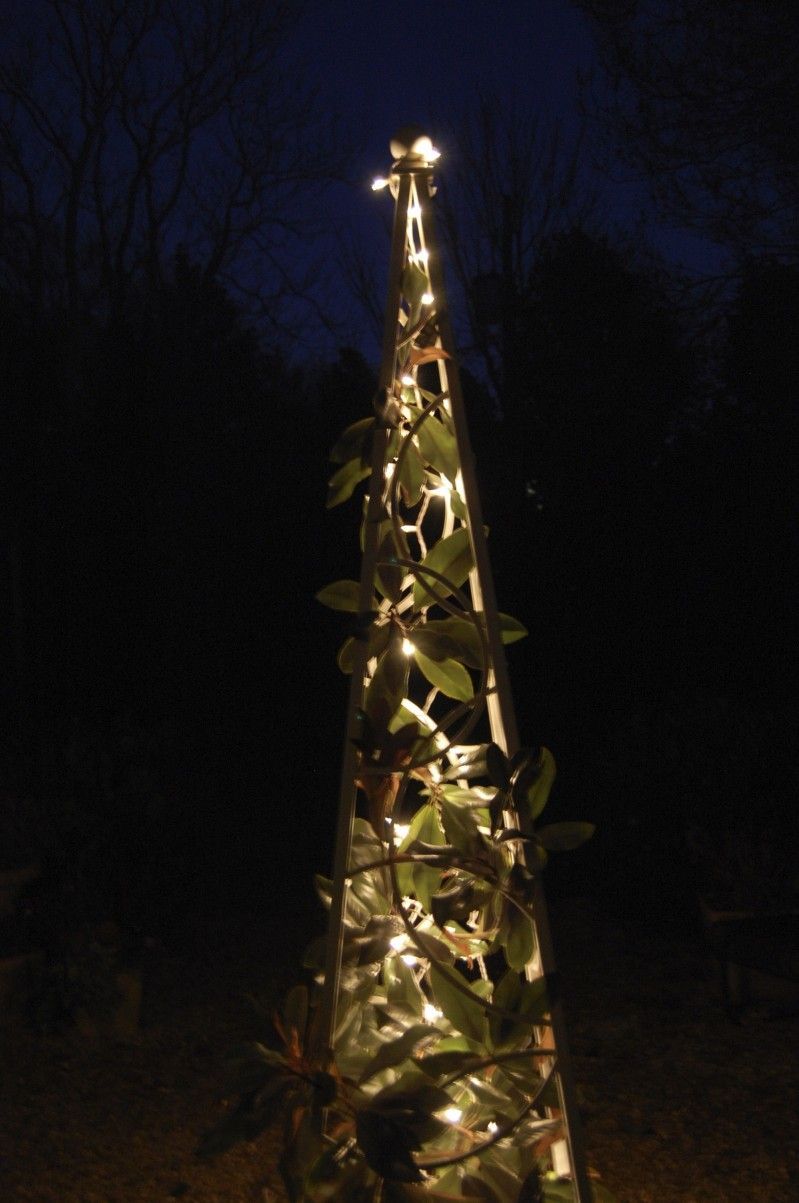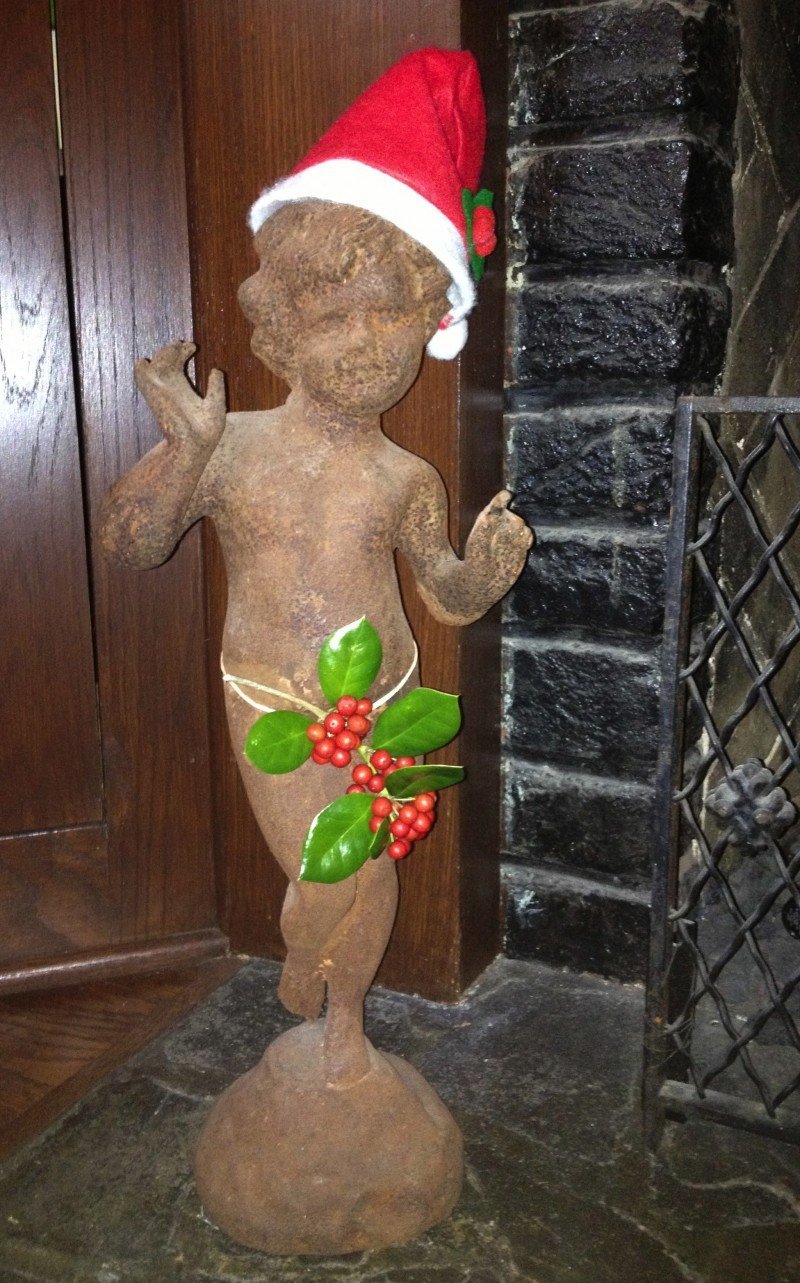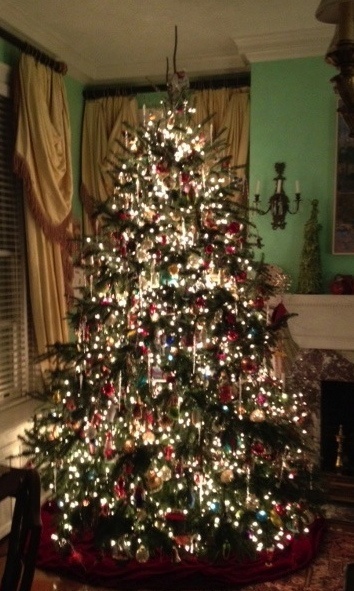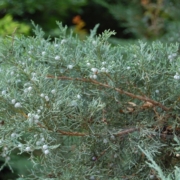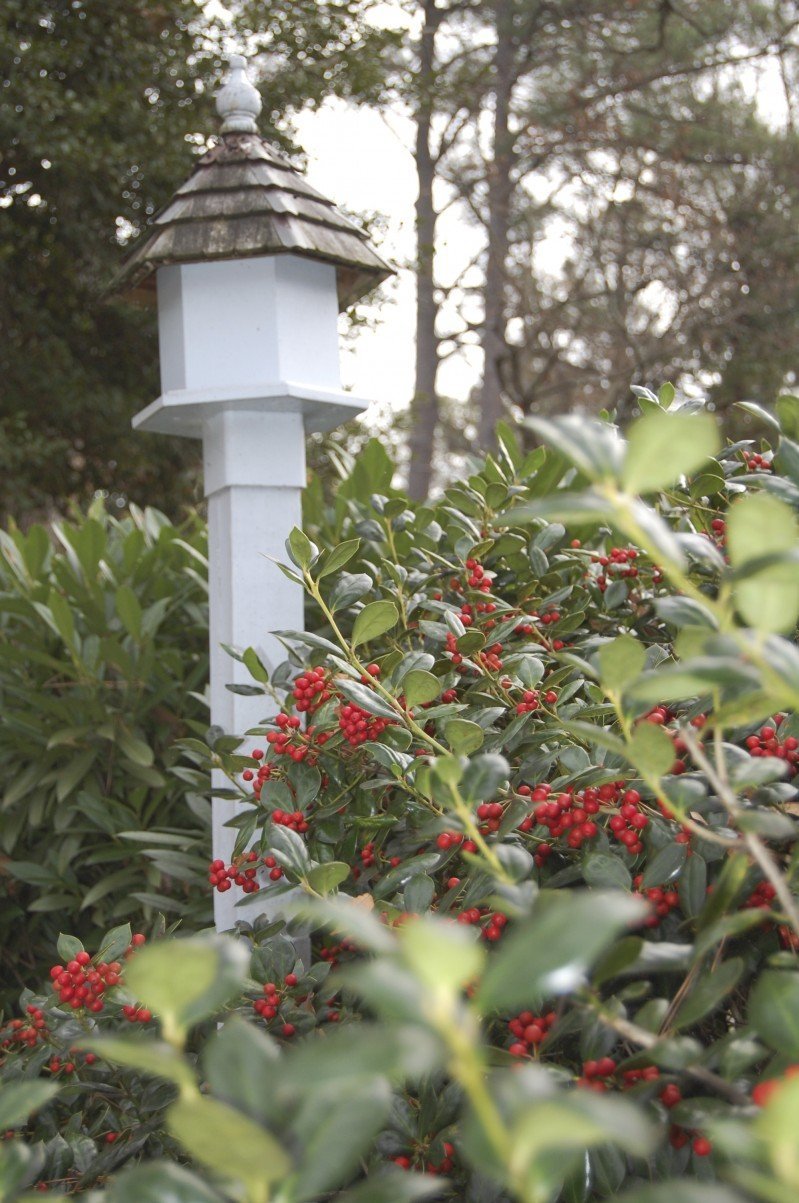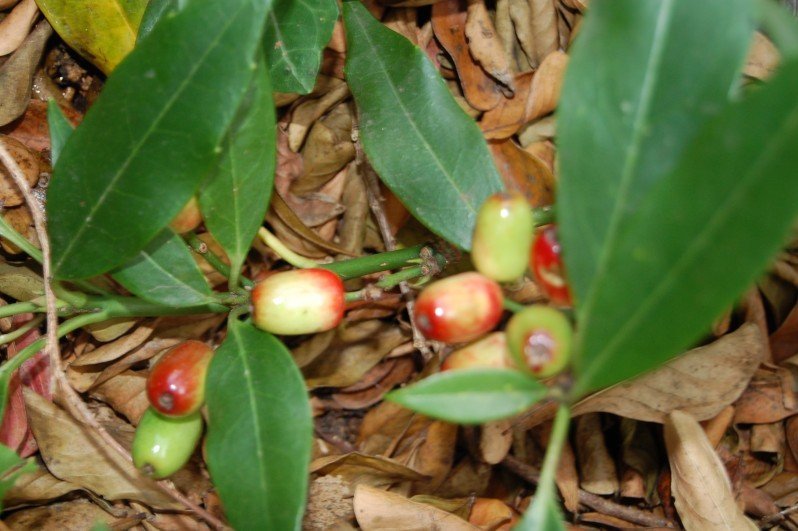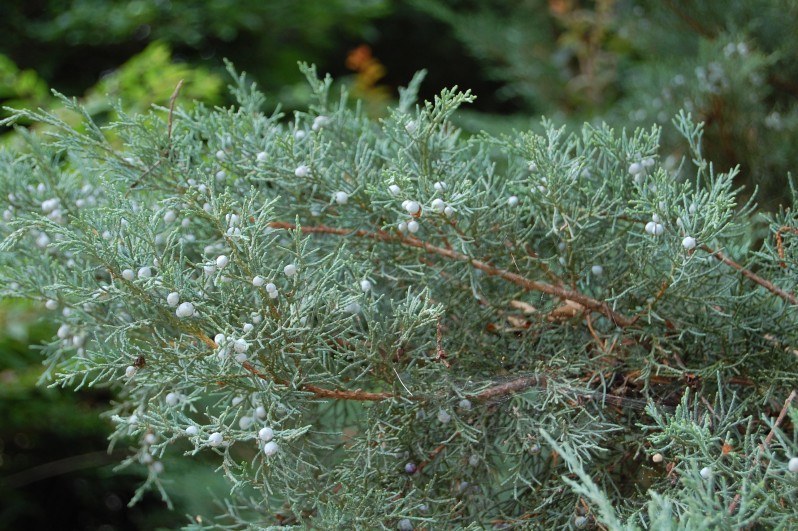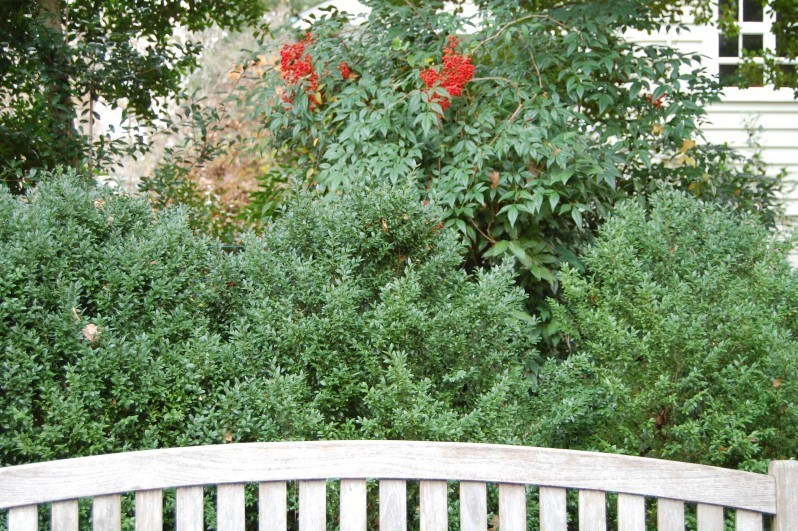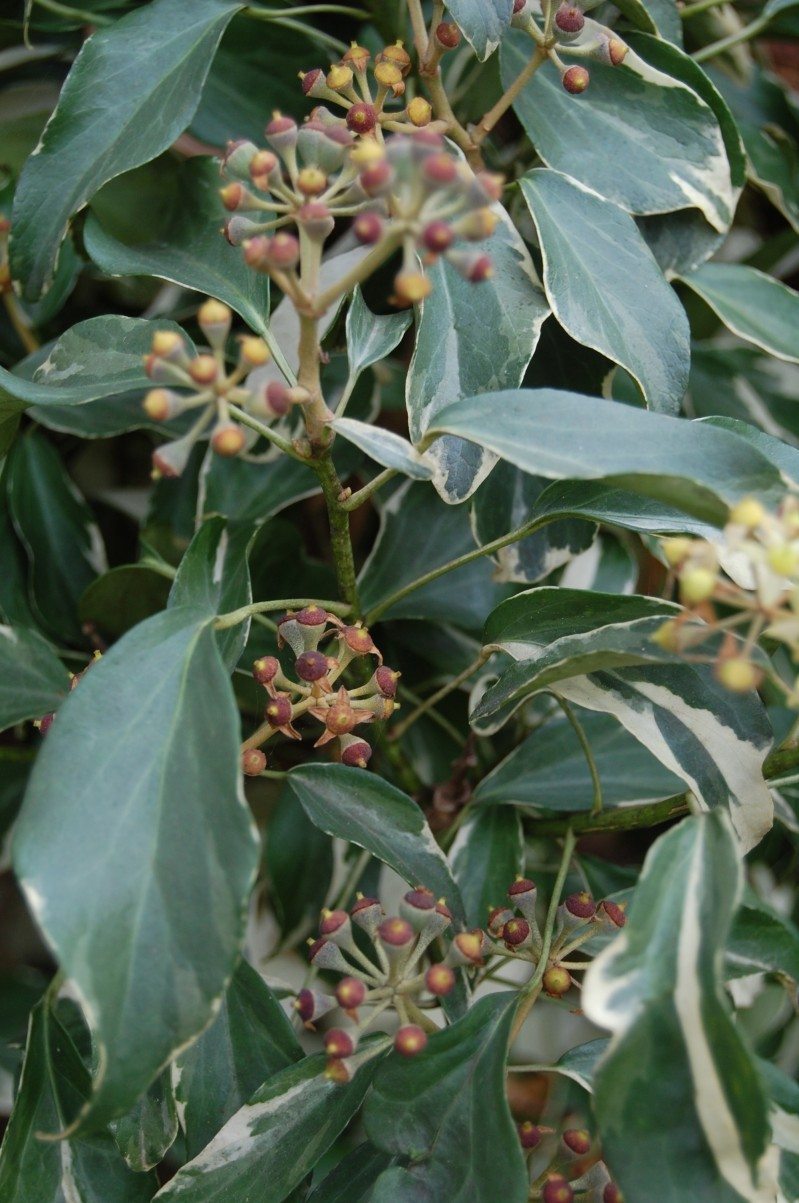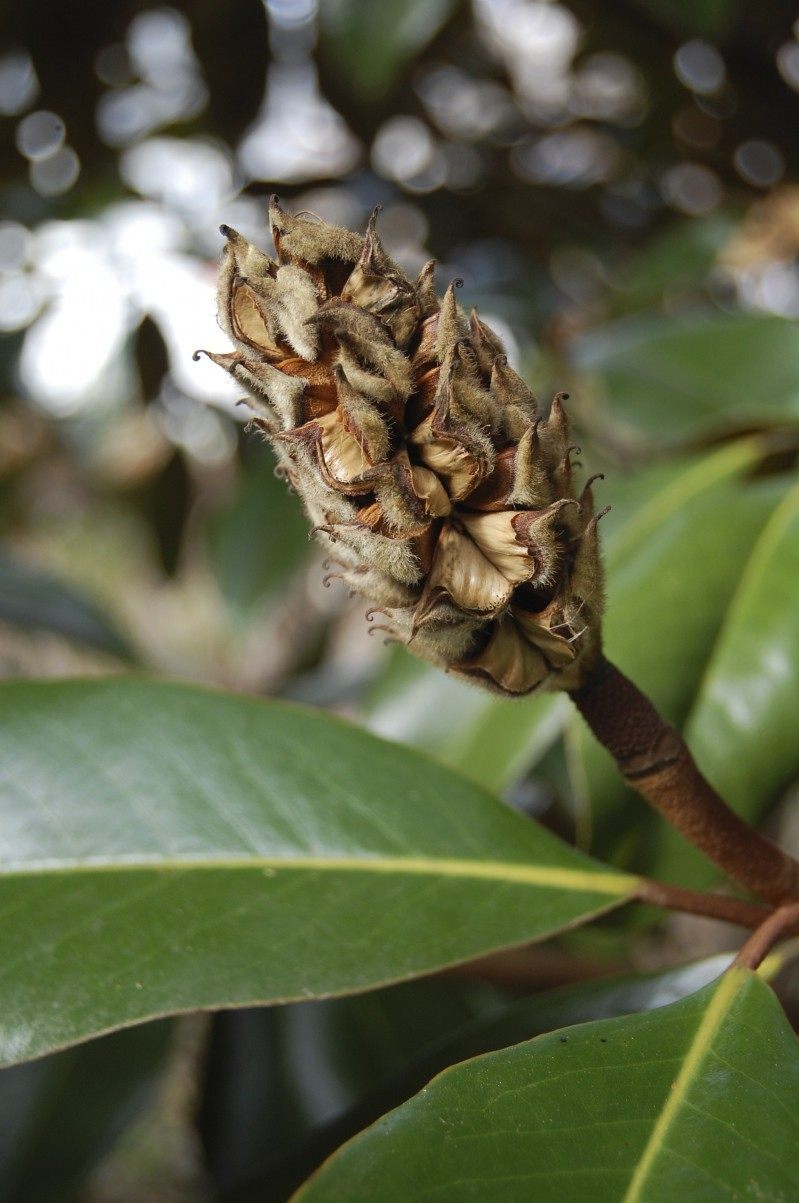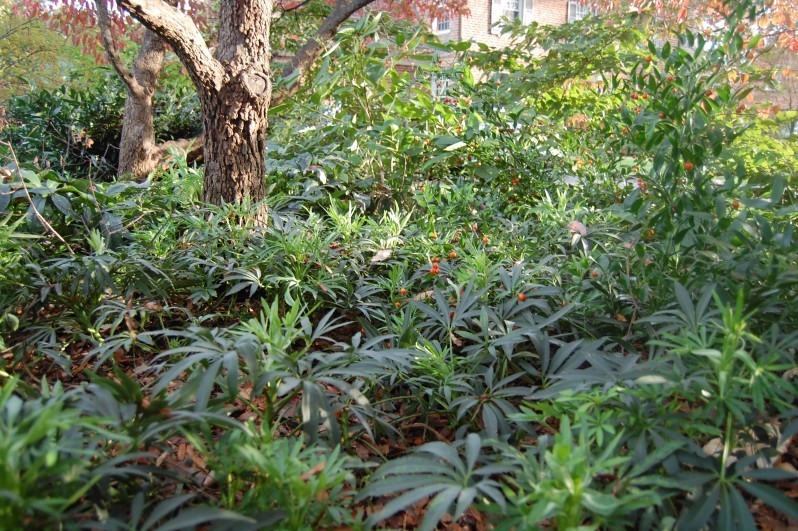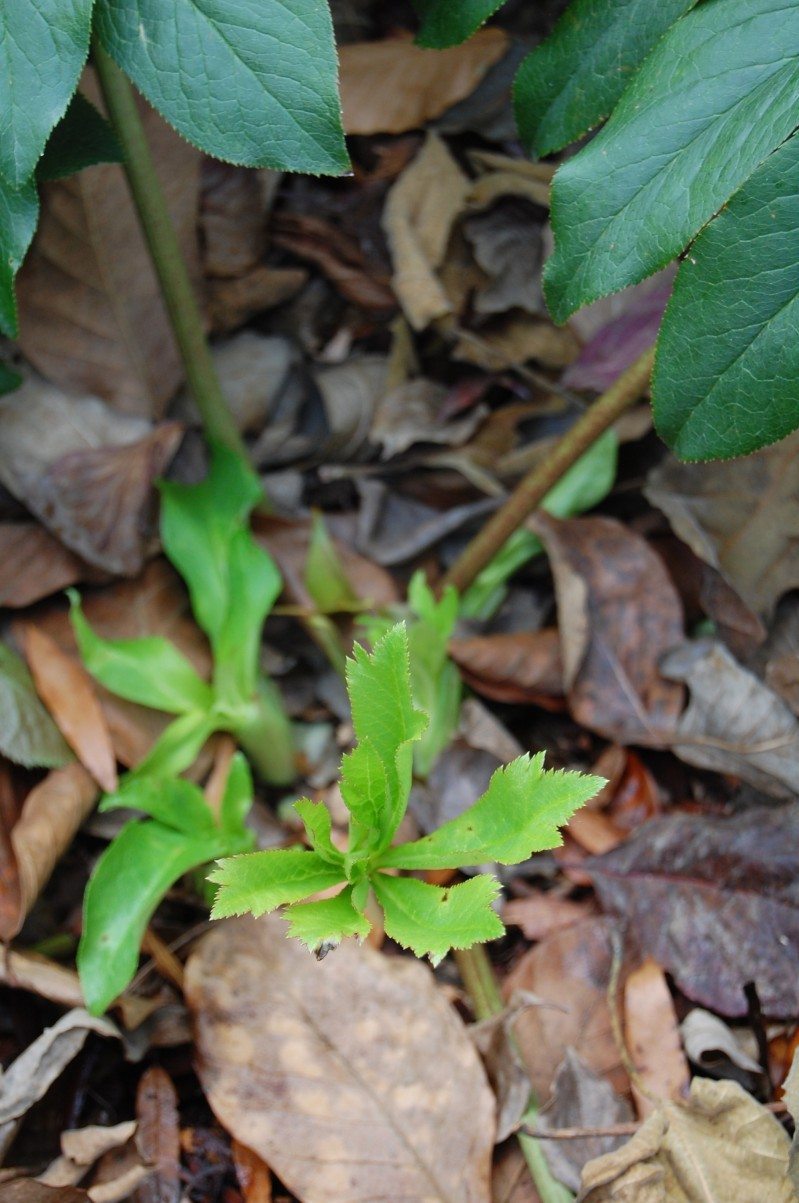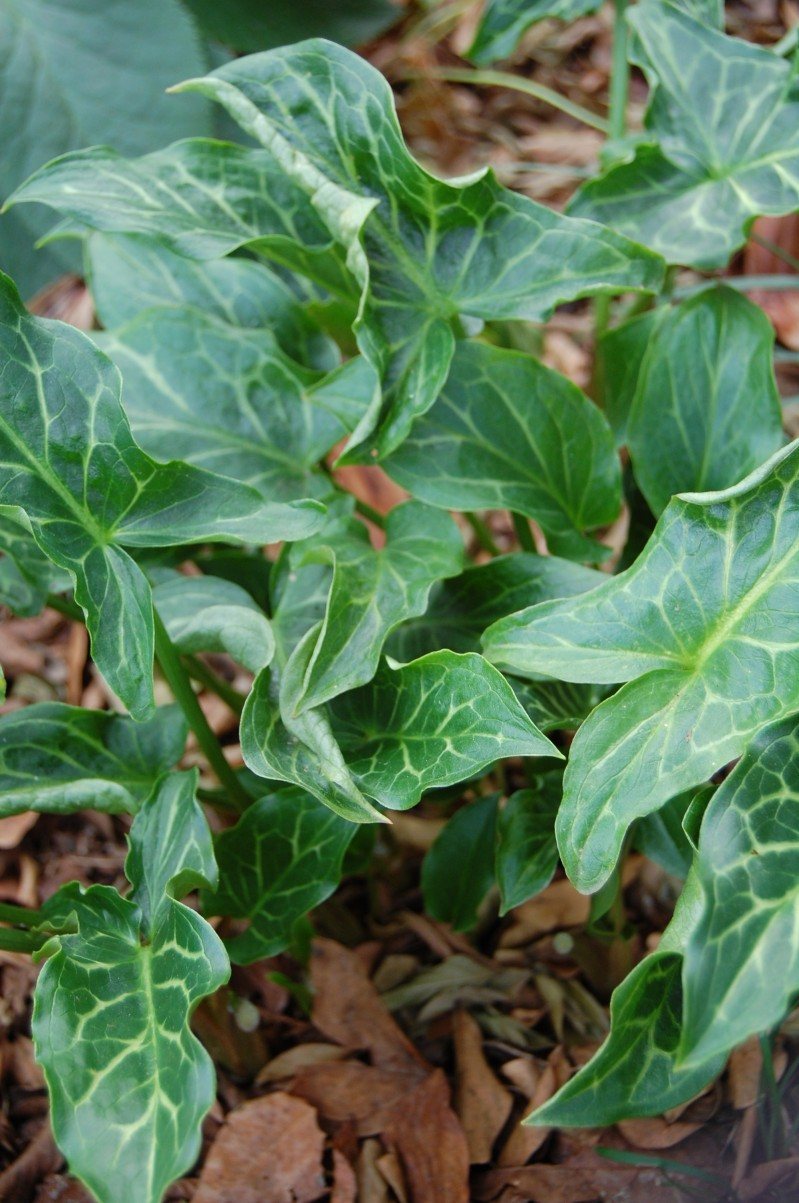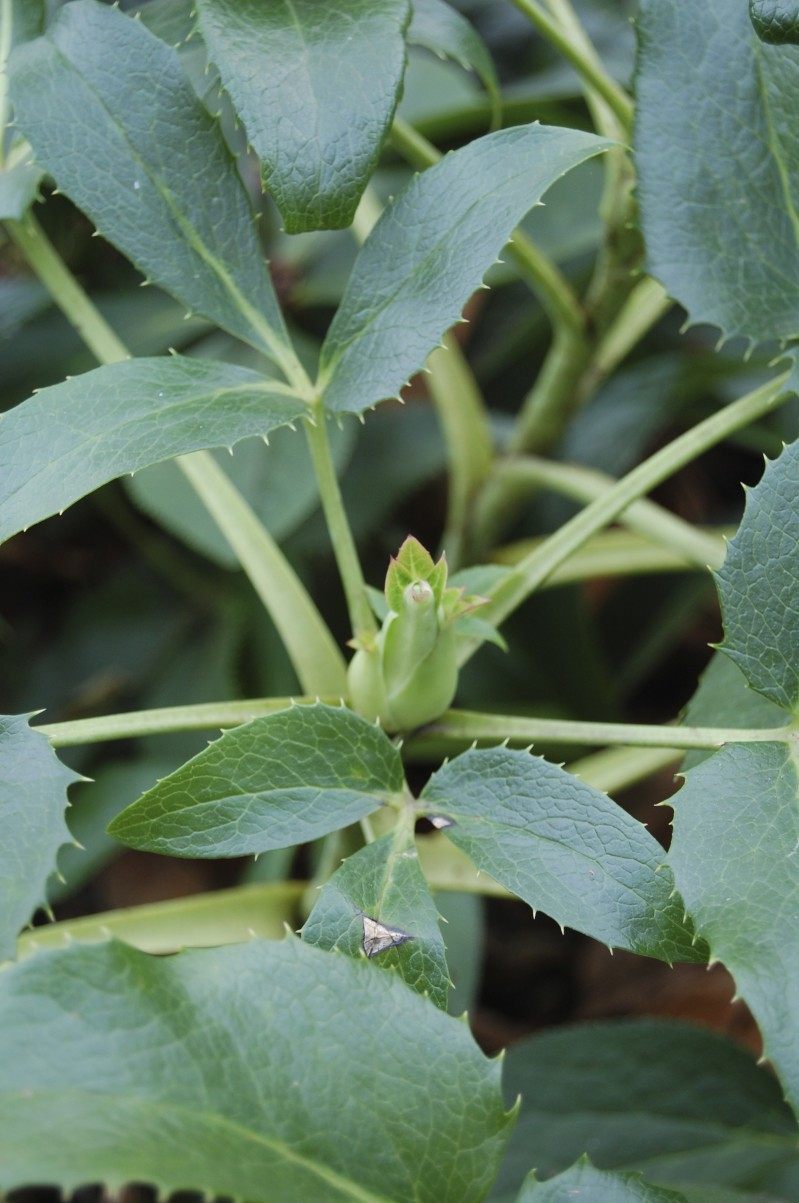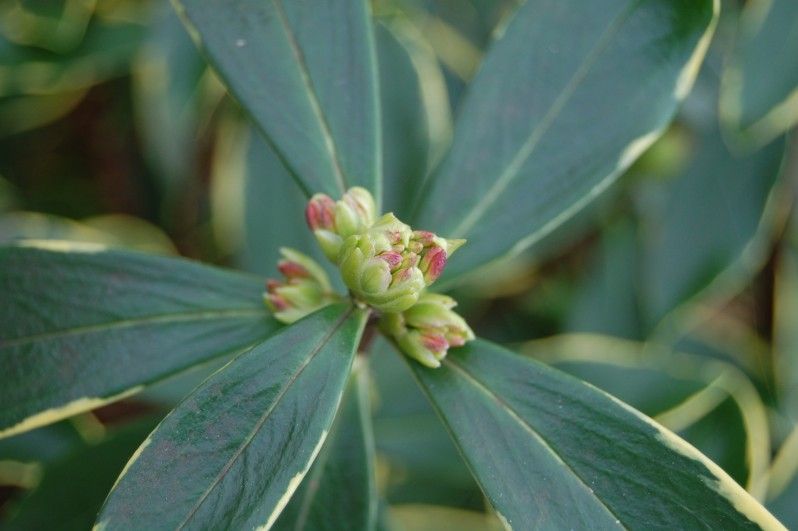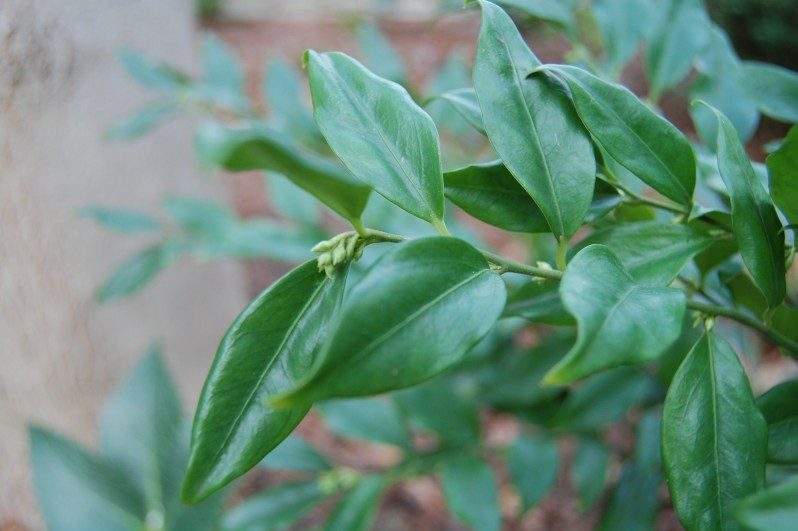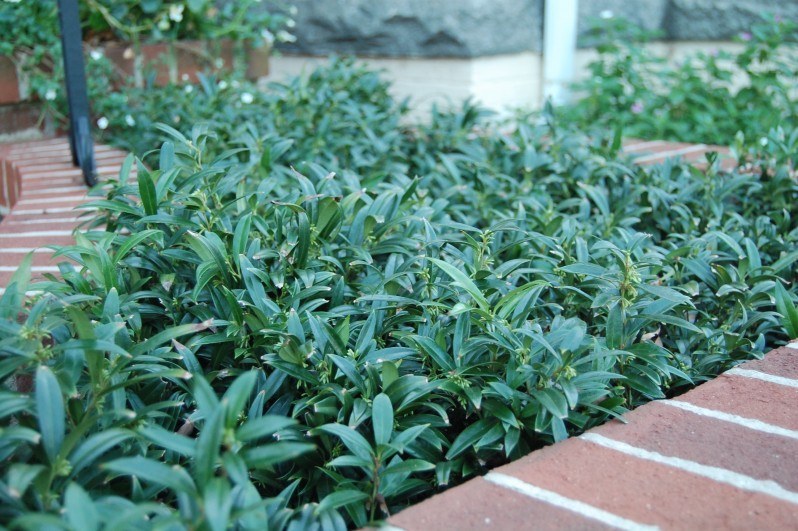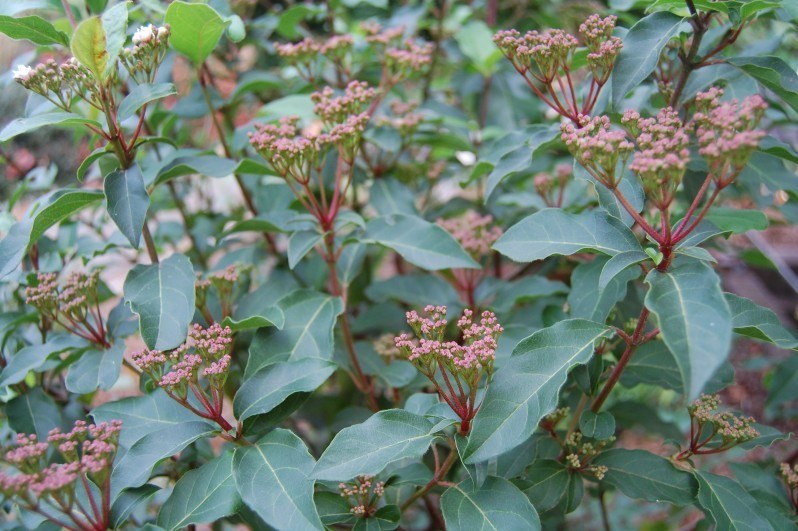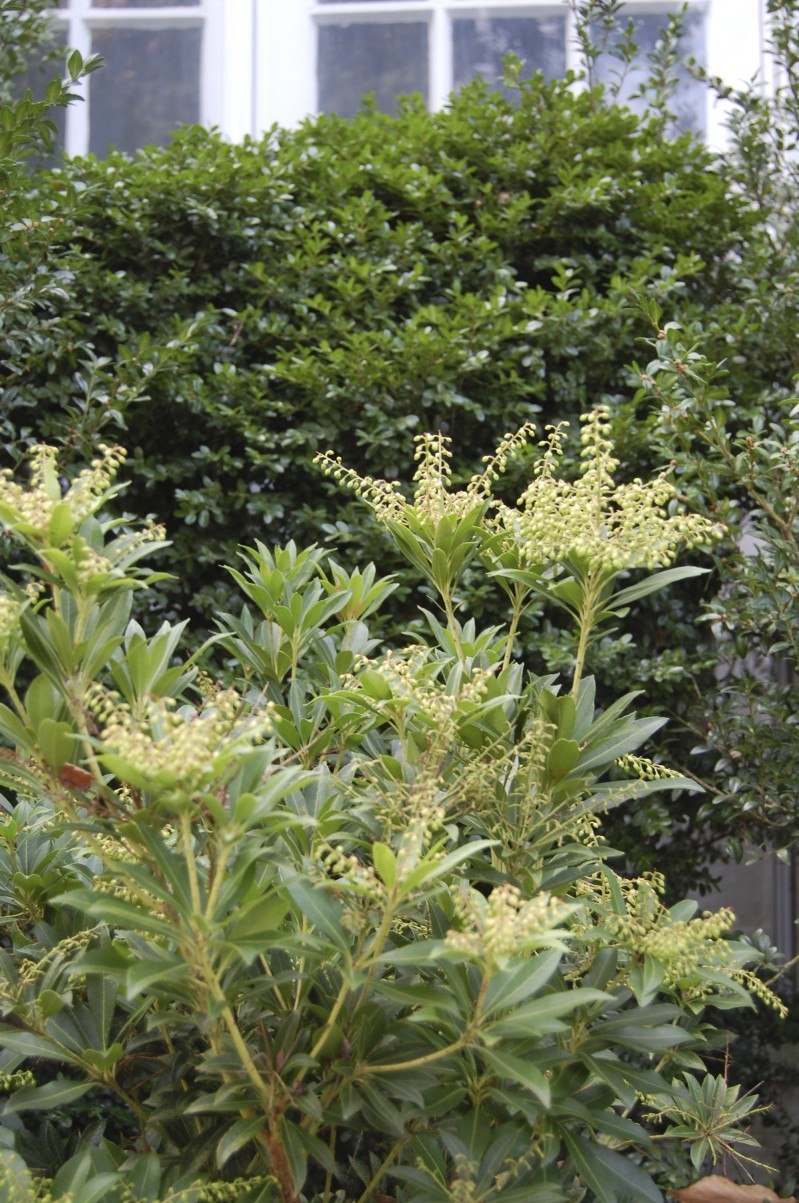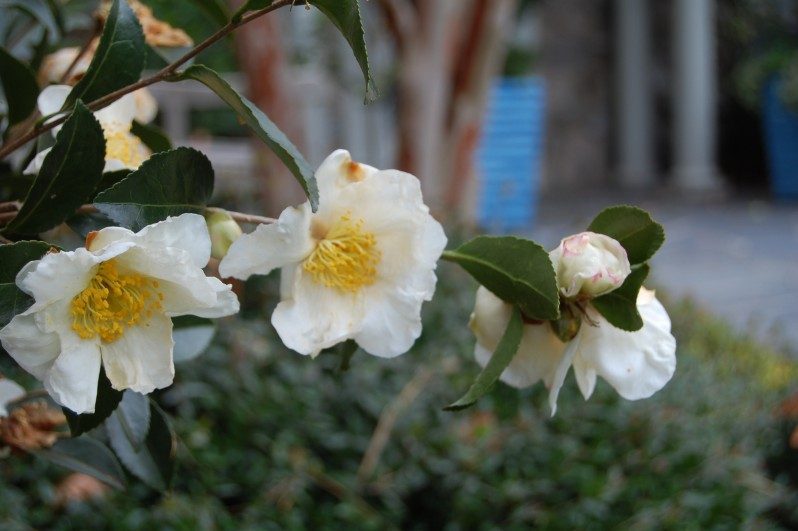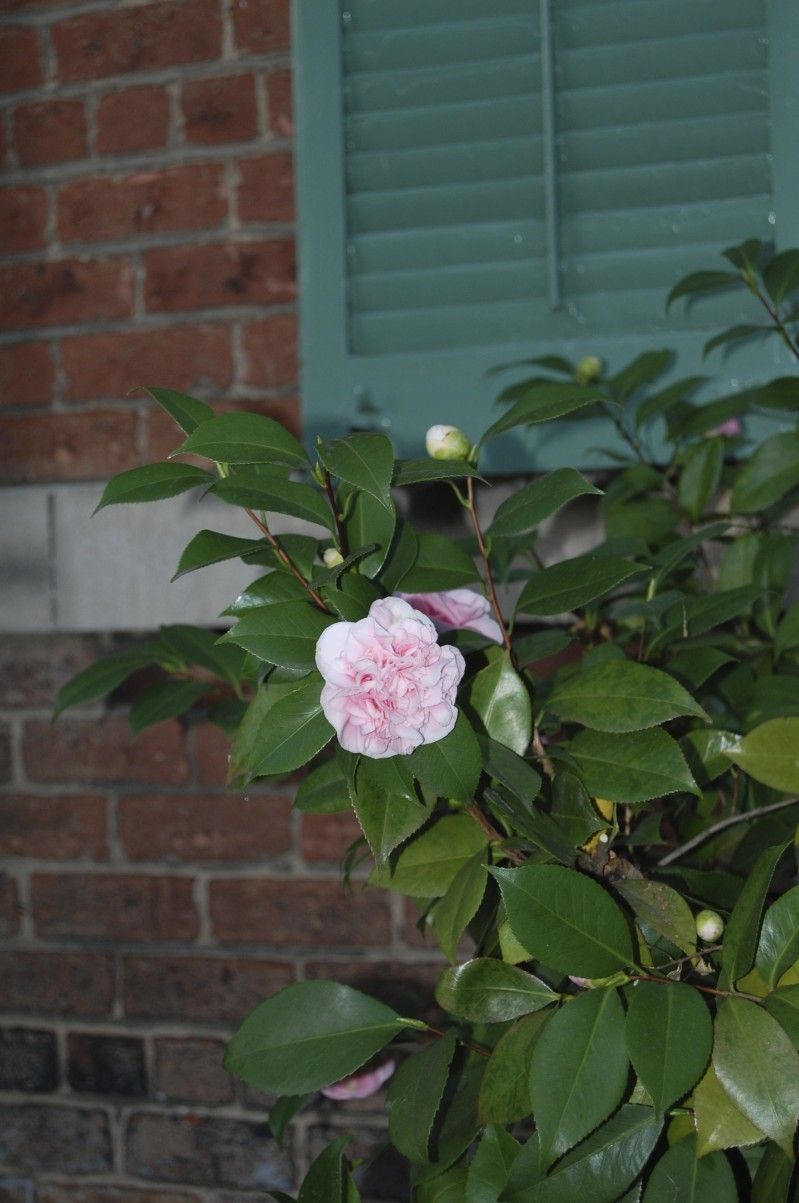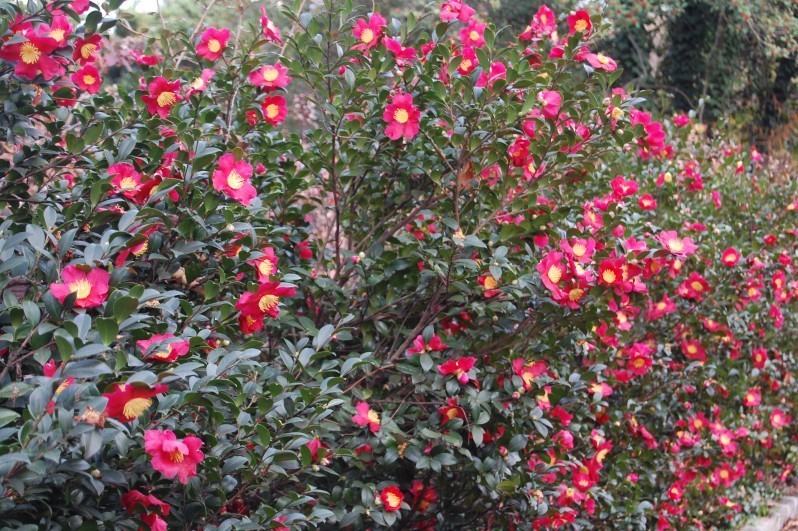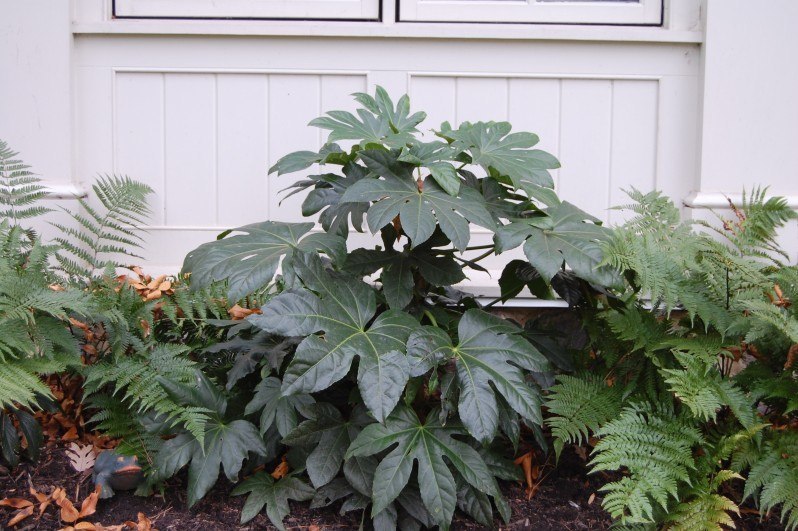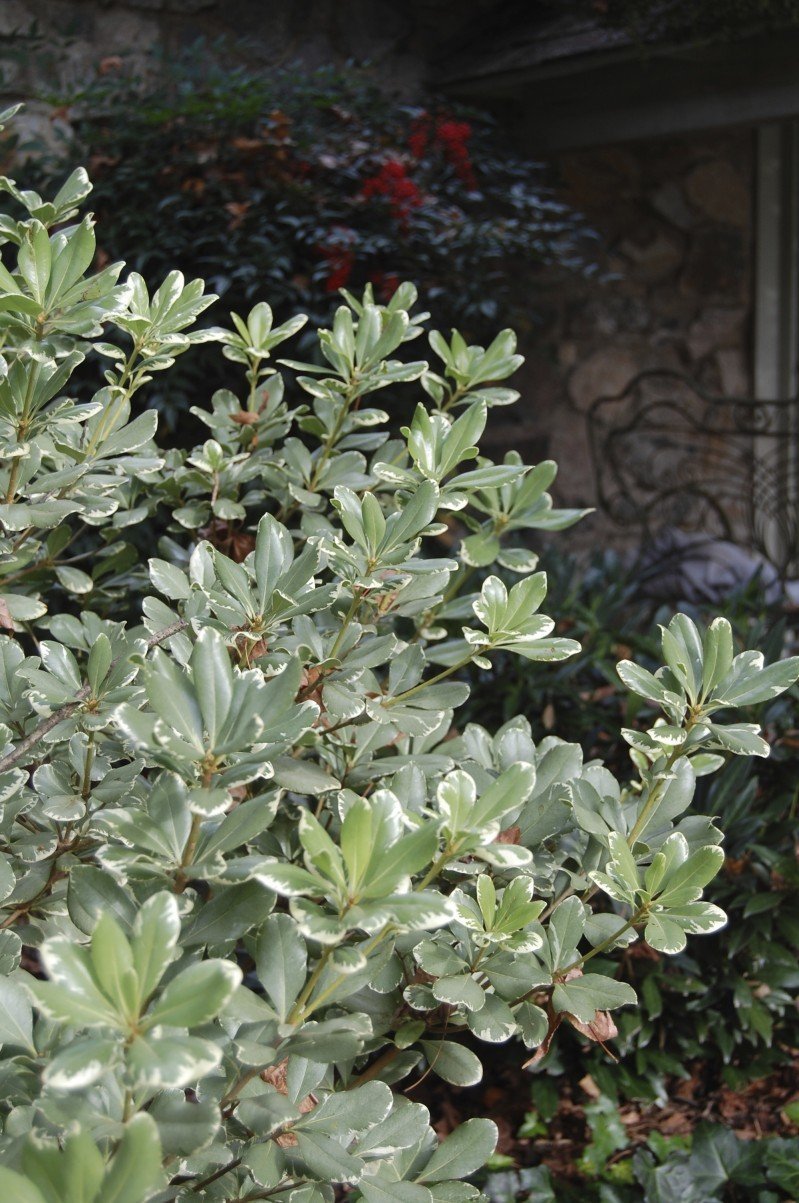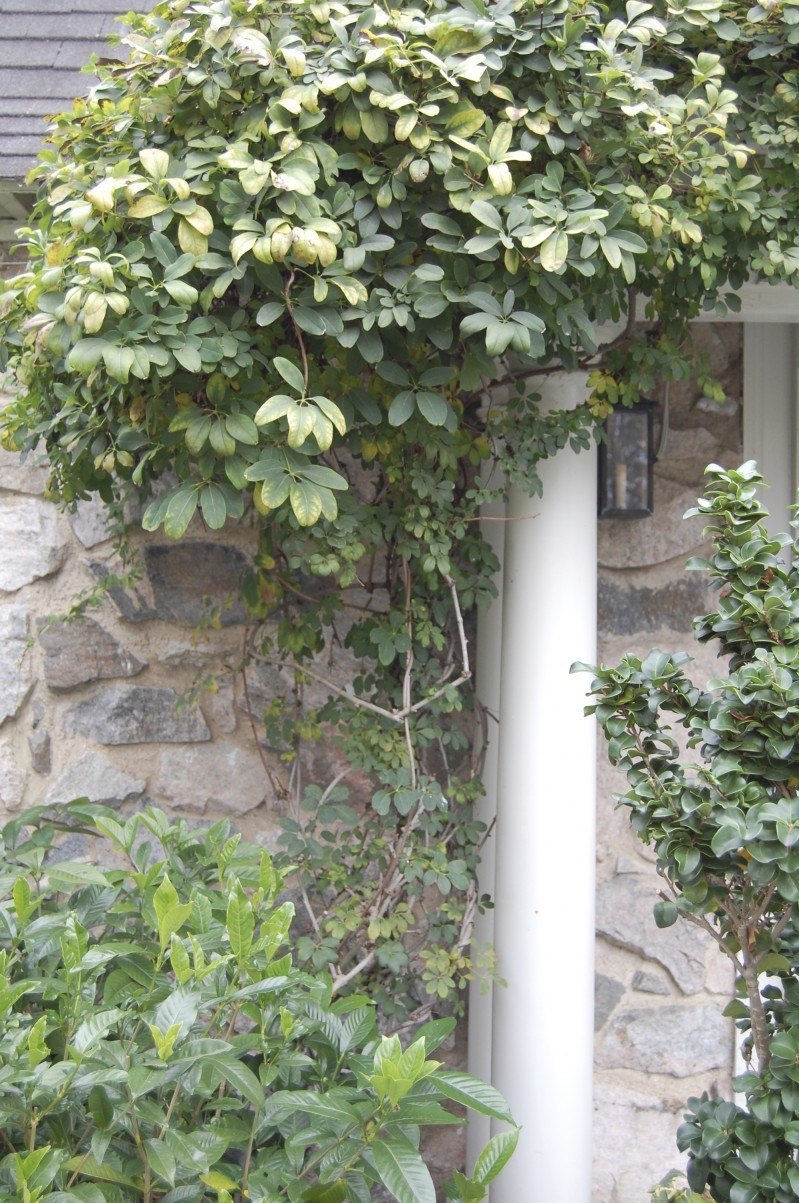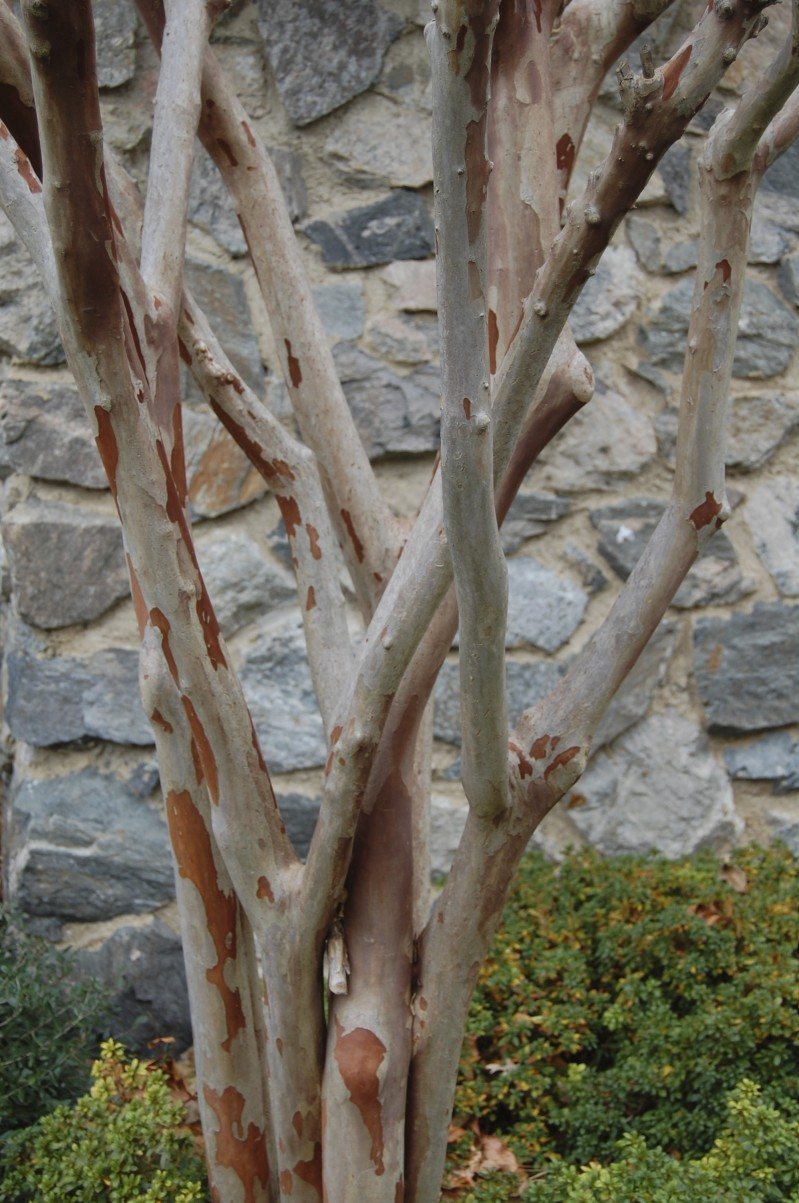DECK THE HALLS!
Richmond glows in December, as its residents cut greens and bare branches, gather fruits and nuts, collect colorful ornaments and fabrics, and string lights. These creative souls then drape their mantles, doors and tables with their festive arrangements and the results are nothing short of spectacular.
MANTLES
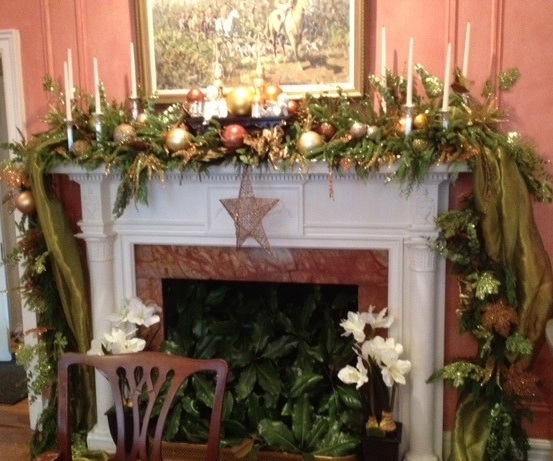
Mary and Dick Fowlkes worked with Tom French Flowers to transform their beautiful Fan home, including this dining room mantle.
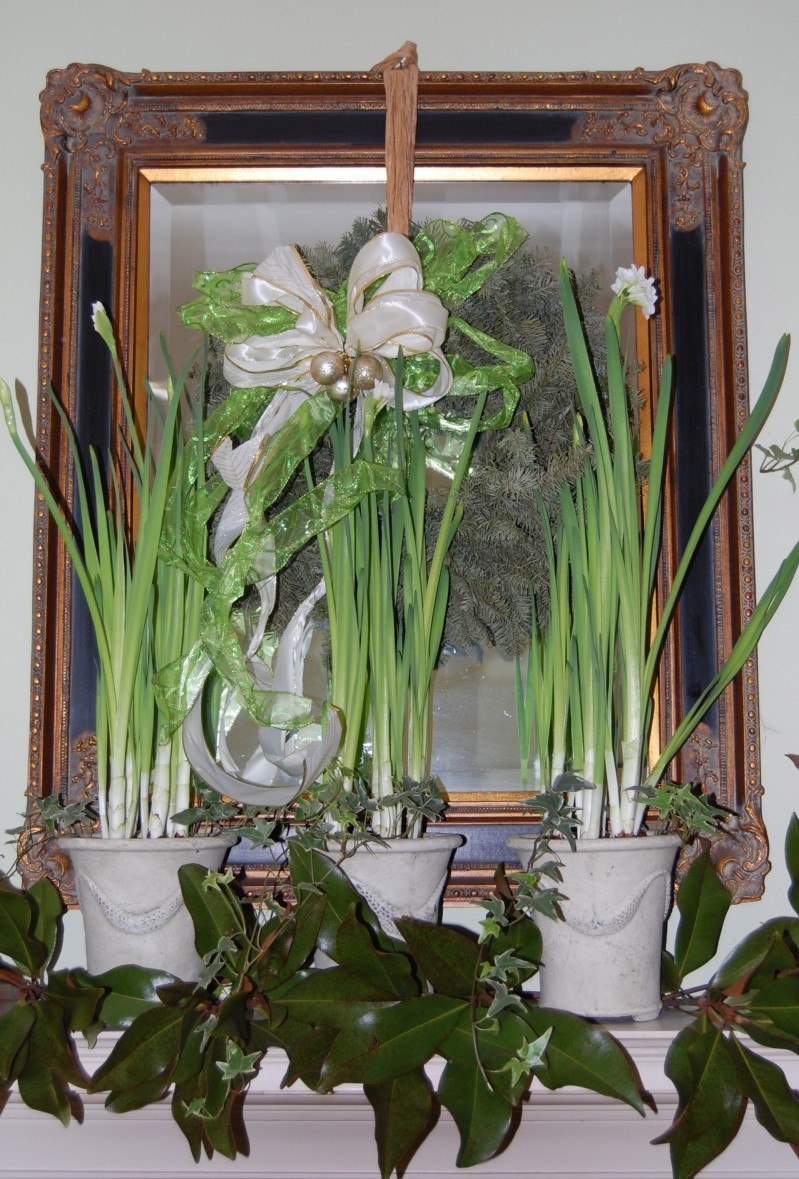
This mantle is just greens — Paperwhites, Magnolia, Variegated Ivy, Fir wreath, with a bow created by Sarah Gibson.
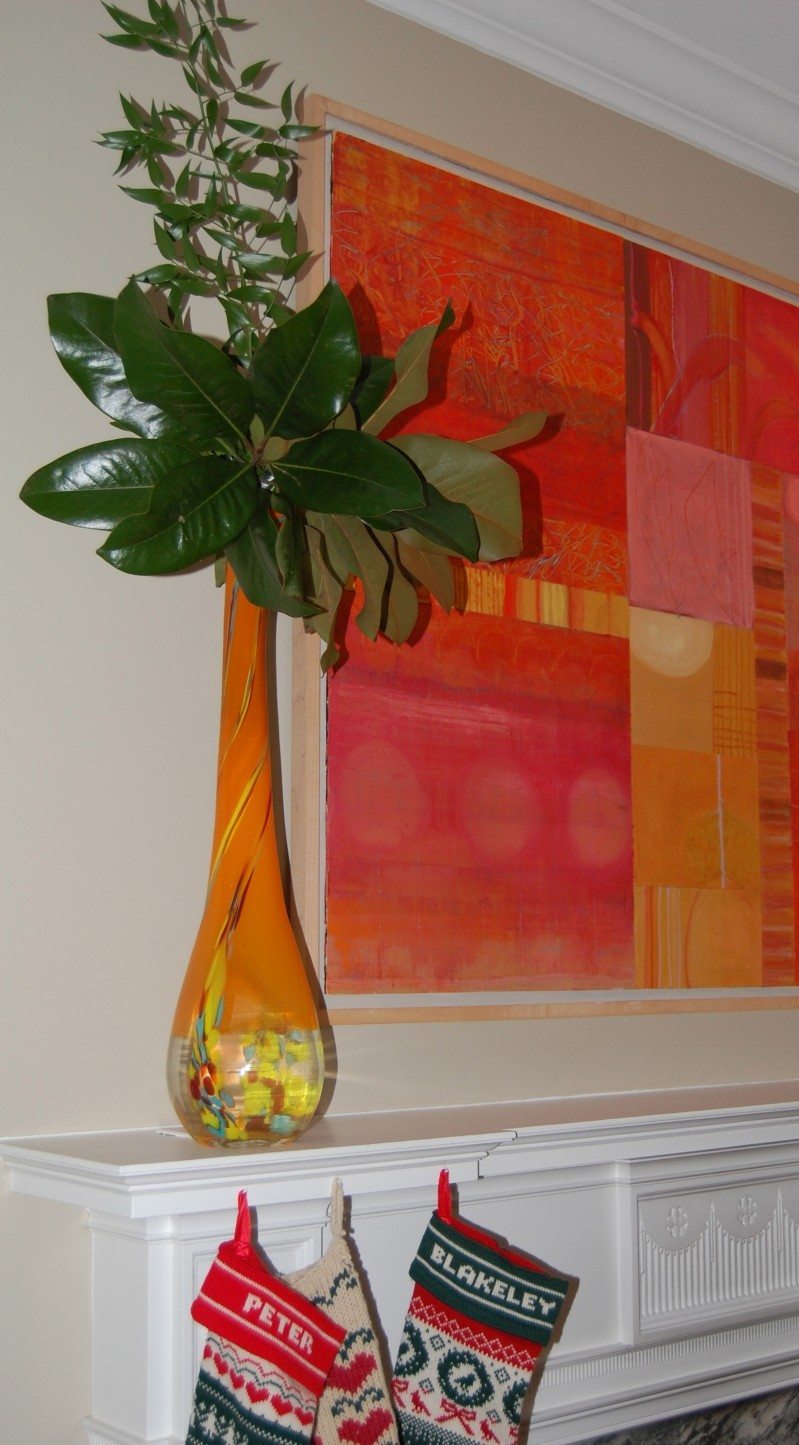
Jennifer Sisk’s mantle and glass vase were featured in my Thanksgiving blog. Here, she again goes minimalist with Magnolia and Poet’s Laurel.
TABLE-SCAPES
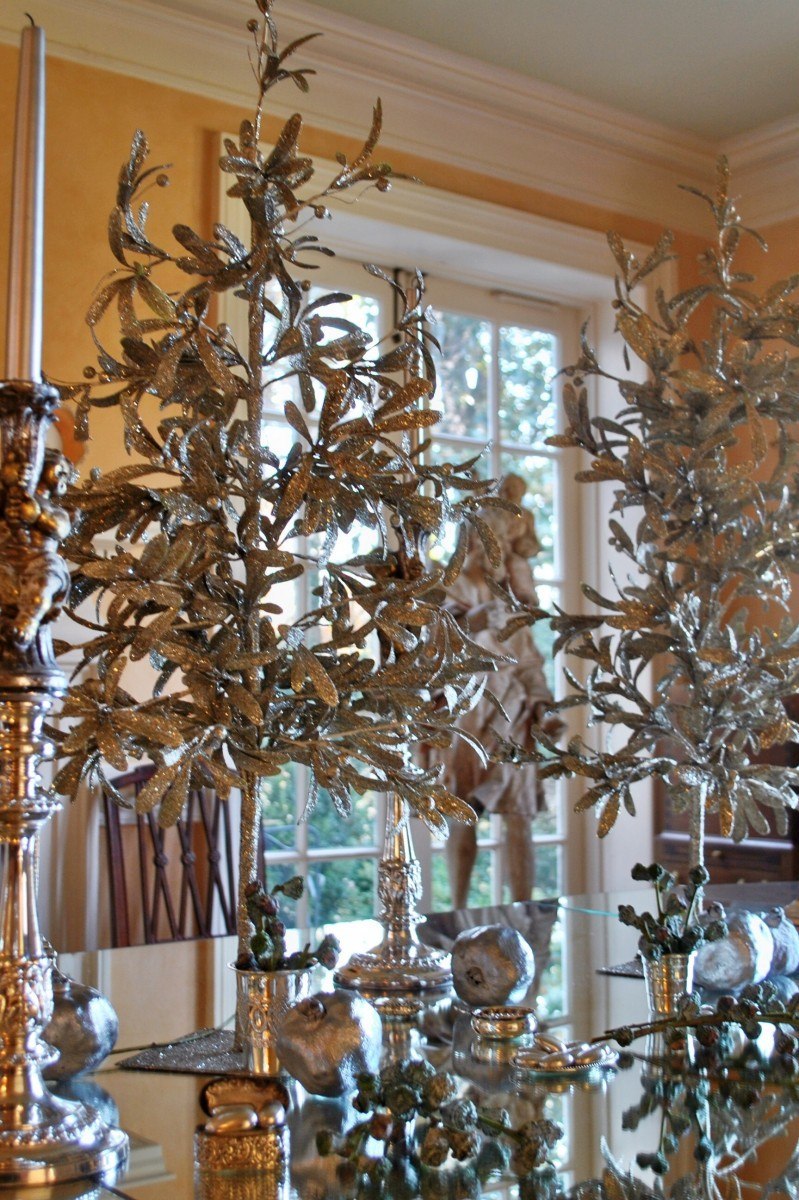
Nan McVey, of McVey Valentine Interior Design, created this dazzling centerpiece by placing trees (bought at Paper Plus) on a mirrored tabletop, then scattering the table with pomegranates, nuts and branches sprayed with silver paint, and little silver containers (wedding presents) filled with chocolates (from For the Love of Chocolate).

This arrangement, with its metallic branches, complements the silver candlesticks on Mary and Dick’s marble-top table. It’s softened by the lilies and moss.
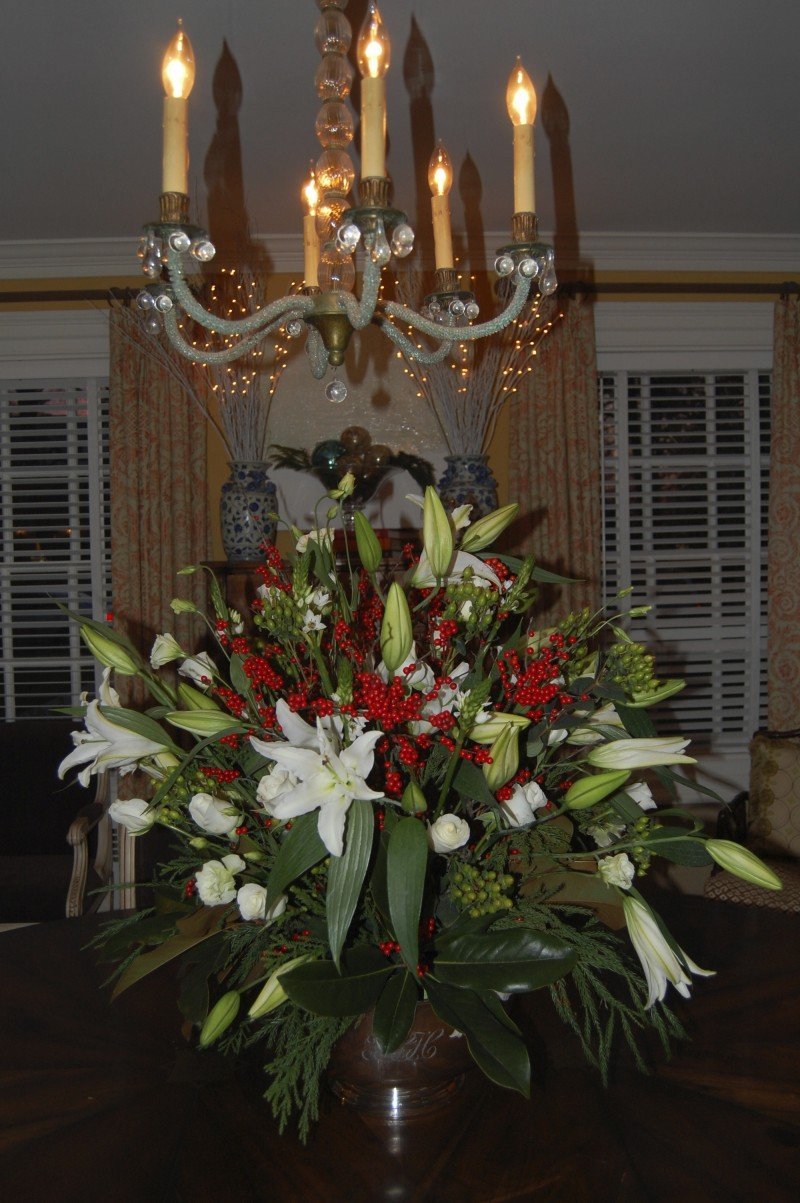
A silver bowl on Katherine’s dining room table is overflowing with Lilies, Bittersweet, Roses, Magnolia and Cedar.
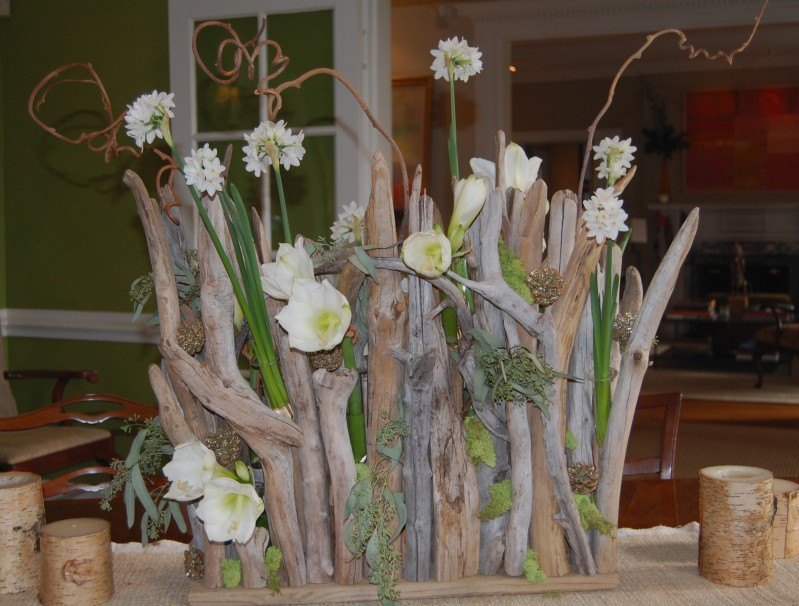
A picture does not do justice to this smashing arrangement. Jennifer cut Paperwhite Narcissus and Amaryllis and tucked them in water tubes (hidden by the wood), then added Curly Willow, moss and Eucalyptus. It is fun to see how one container can be the source of such different treatments (see Thanksgiving blog, for an arrangement done by Deborah Valentine and Bocky Talbott in the same container). If Deborah can track down the man from whom she bought the wooden containers (on the side of the road), they’ll be available at her shop, V for the Home.
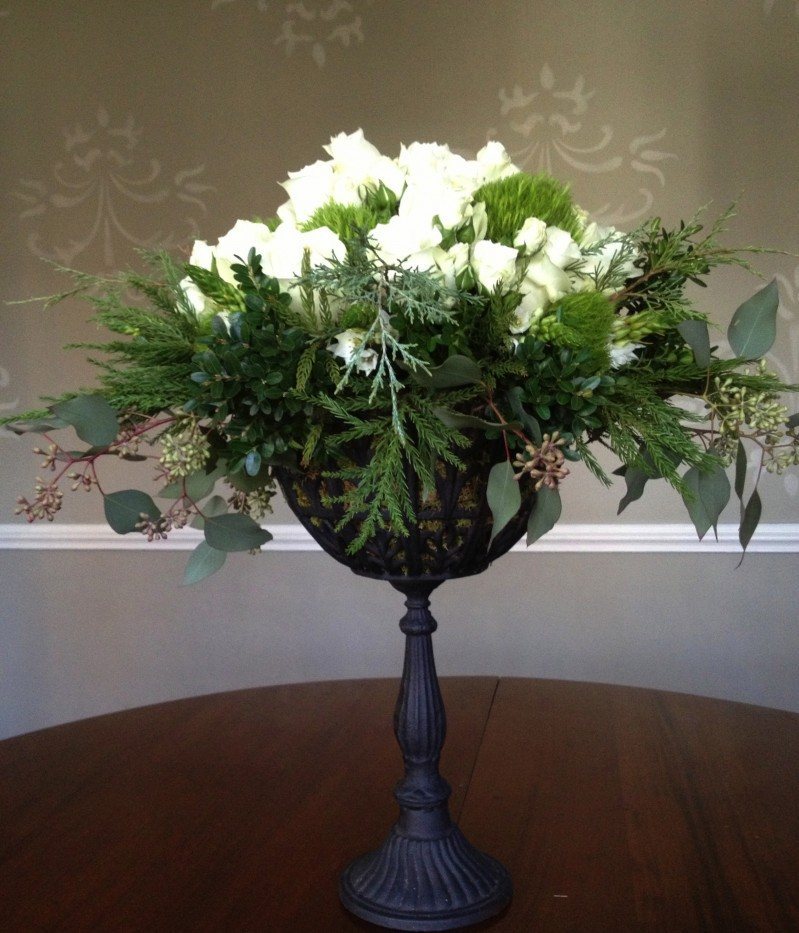
Ashley Wallace and Jeannie Schutt used Roses, Japanese Cryptomeria, Blue Atlas Cedar, Boxwood and Eucalyptus to create this beautiful arrangement.
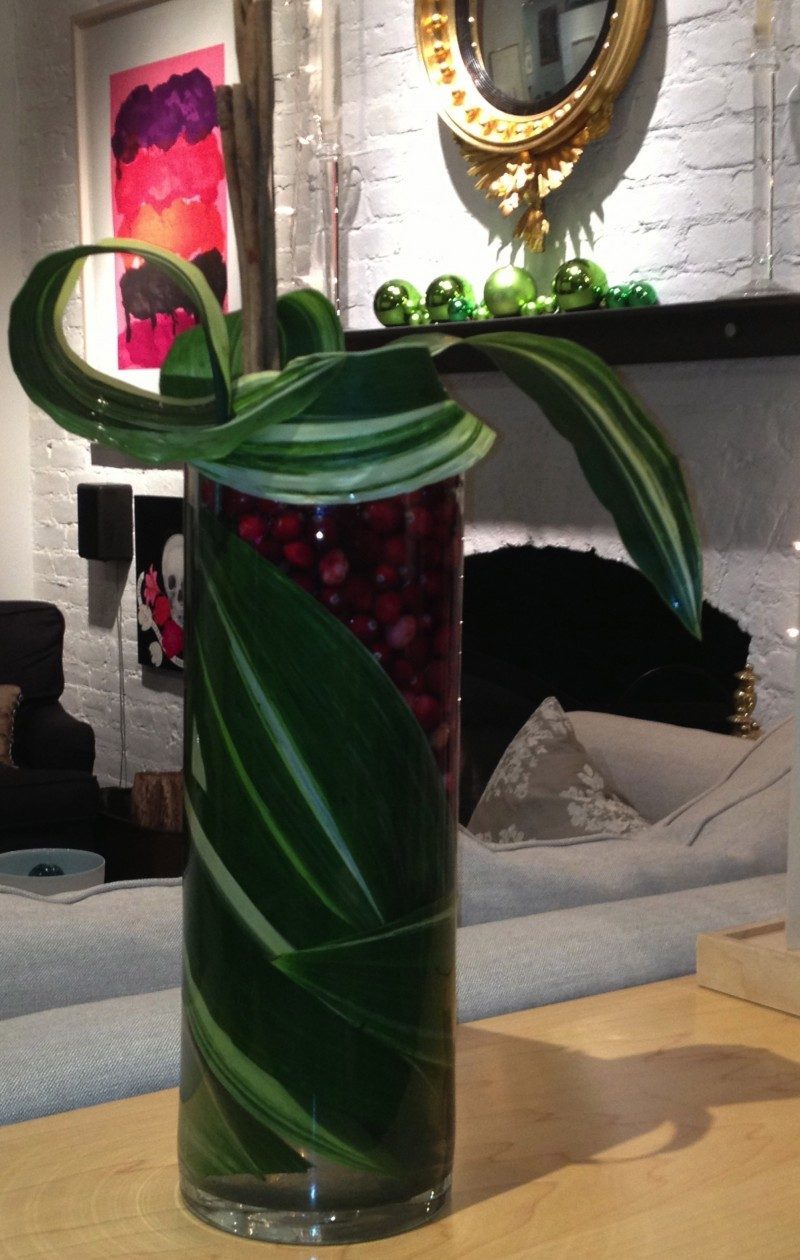
Jeanette McKittrick used the traditional Christmas colors of red and green to dramatic effect in this stunning arrangement where Variegated Aspidistra leaves, Cranberries and Cinnamon sticks take the plunge.
OUTDOORS

Becky White, CCV’s Head Horticulturalist, does an amazing job keeping the grounds and containers looking spectacular year round. Not surprisingly, she went to town on the Club’s urns.
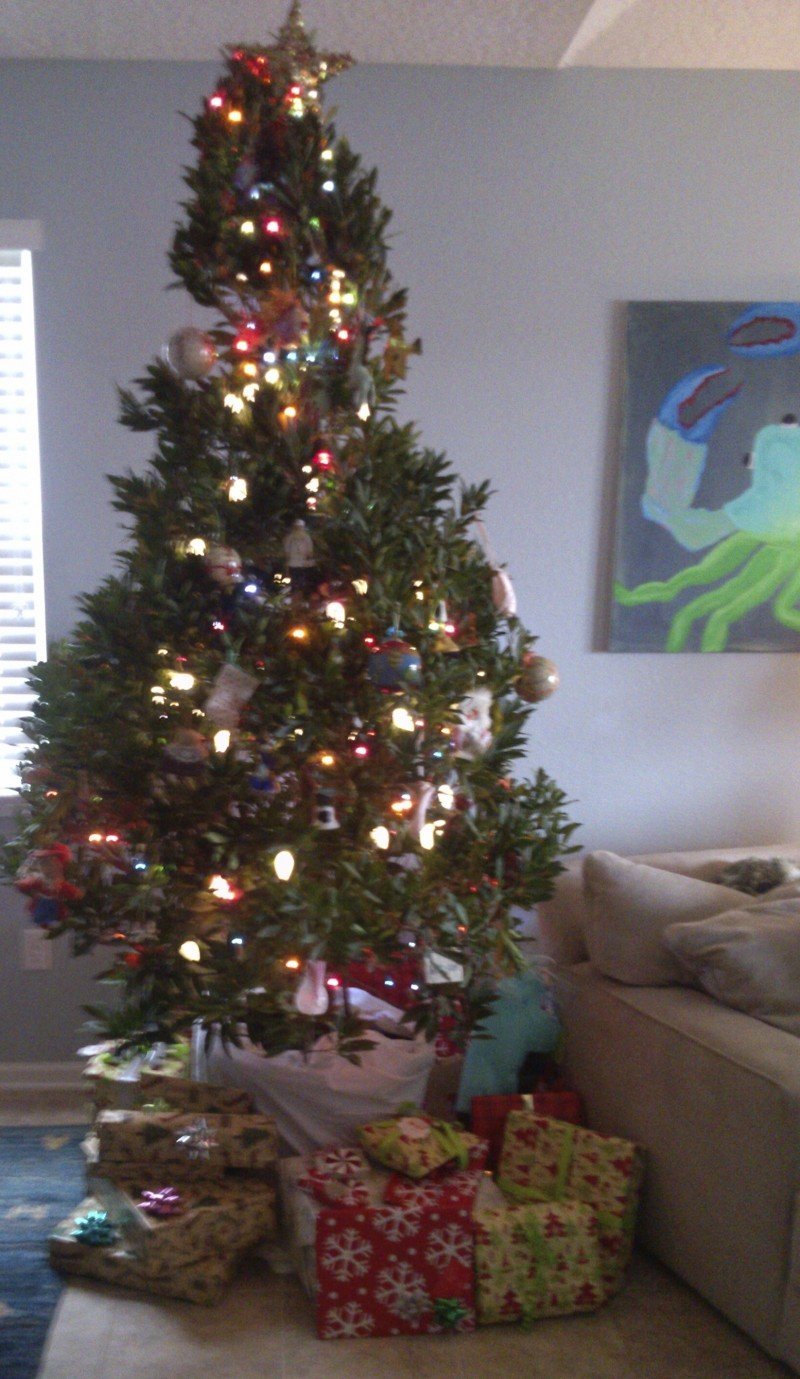
My niece, Whitney, brought the outside in. She decorated a live Japanese Blueberry, and will plant it in her yard after the holidays. She’s near Jacksonville — wish we could grow those in Richmond. They look nothing like our Blueberry bushes!
In this Joyous Season, may you find the time to take a quiet walk on a beautiful crisp night and “wonder as you wander out under the sky.”

